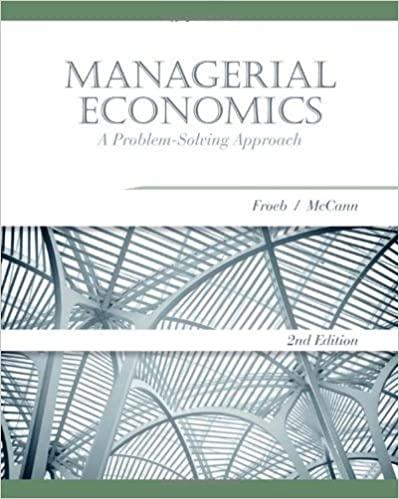Answered step by step
Verified Expert Solution
Question
1 Approved Answer
14. Statement E Utility is measured by how much a person is willing to pay for a good or service. Statement I: If you buy

14. Statement E Utility is measured by how much a person is willing to pay for a good or service. Statement I: If you buy four units of a good, your total utility is higher than if you purchased only three units. A. Statement I is true and statement l is false. 8. Statement Il is true and statement I is false. are true. C. Both s D. Both statements are false. 15. When average total cost is declining, then A. marginal cost must be less than average total cost B. marginal cost must be greater than average total cost. C average total cost must be greater than average fixed cost. D. average variable cost must be declining. 16. Which statement is true? A. The marginal cost curve intersects both the average variable cost curve and the average curve at their minimum points. B. The marginal cost curve neither the average variable cost curve nor the average total cost curve at their minimum points. C. The marginal cost curve the average variable cost curve at its minimum point, but it does not intersect the average total cost curve at its minimum point. D. The marginal cost curve intersects the average total cost curve at its minimum point, but it does not intersect the average variable cost curve at its minimum point. 17. If fixed cost is $5,000, and, at an output of 3 variable cost is $4,000, how much is average total cost at an output of 3? A. $1,333.33 B. $3,000 C. $4,500 D. $9,000 is (are) the relationship between the maximum amounts of output a firm can produce i 18. various quantities of inputs. A. A production function B. The law of diminishing returns C. Economies of scale
14. Statement: Utility is measured by how much a person is willing to pay for a good or service Statement it if you buy four units of a good, your total utility is higher than if you purchased only three units A Statement is true and statement is false. 8. Statement is true and statement I is false. C. Both statements are true. D. Both statements are false. 15. When average total cost is declining, then A marginal cost must be less than average total cost 8. marginal cost must be greater than average total cost. Caverage total cost must be greater than average fixed cost. D. average variable cost must be declining. 16. Which statement is true? A. The marginal cost curve intersects both the average variable cost curve and the average total cost curve at their minimum points. 8. The marginal cost curve intersects neither the average variable cost curve nor the average total cost curve at their minimum points C. The marginal cost curve intersects the average variable cost curve at its minimum point, but it does not intersect the average total cost curve at its minimum point. D. The marginal cost curve intersects the average total cost curve at its minimum point, but it does not intersect the average variable cost curve at its minimum point. 17. If fixed cost is $5,000, and, at an output of 3 variable cost is $4,000, how much is average total cost at an output of 37 A. $1,333.33 B. $3,000 C. $4,500 D. $9,000 18. is (are) the relationship between the maximum amounts of output a firm can produce various quantities of inputs. A. A production function B. The law of diminishing returns C. Economies of scale D. Diseconomies of scale
Step by Step Solution
There are 3 Steps involved in it
Step: 1

Get Instant Access to Expert-Tailored Solutions
See step-by-step solutions with expert insights and AI powered tools for academic success
Step: 2

Step: 3

Ace Your Homework with AI
Get the answers you need in no time with our AI-driven, step-by-step assistance
Get Started


